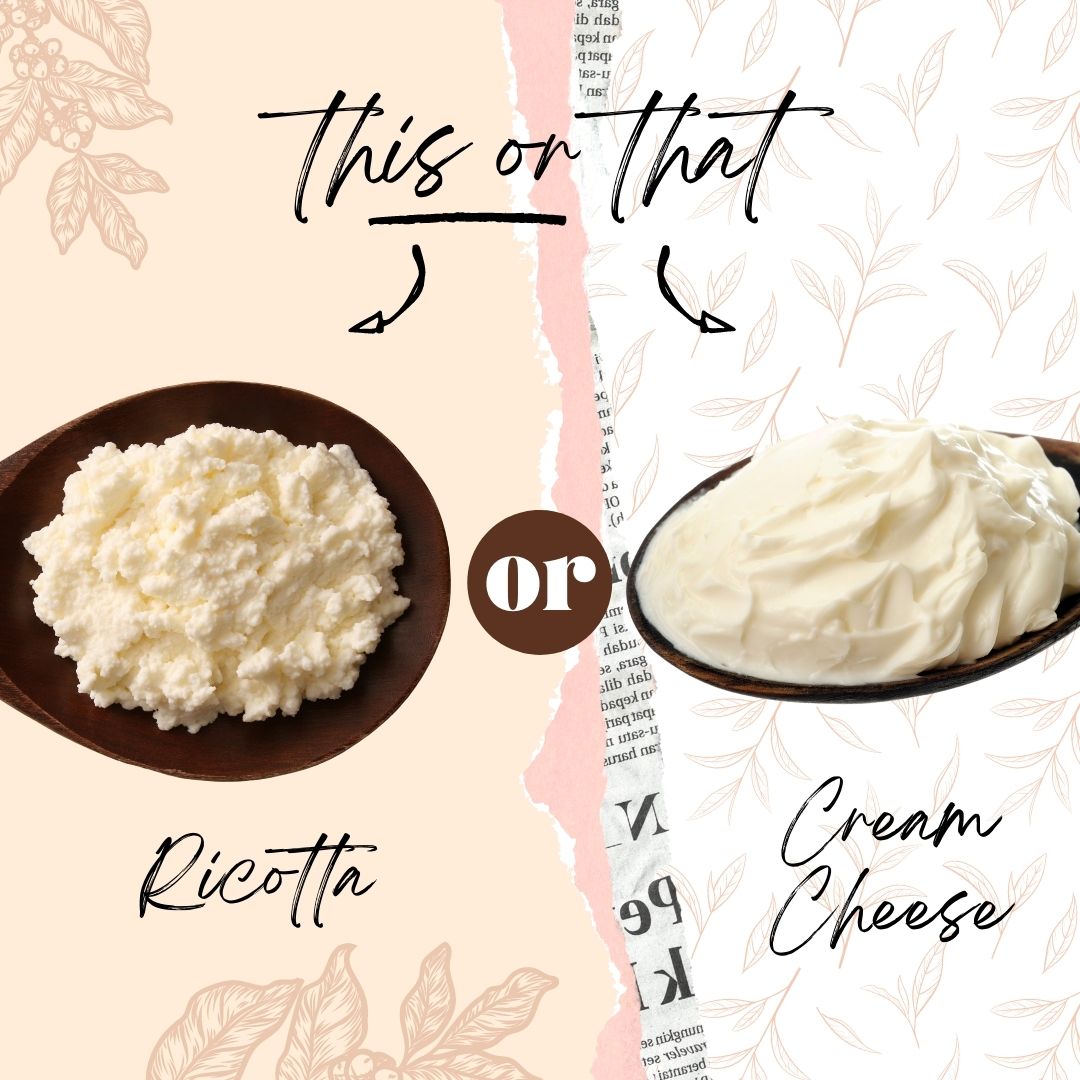Last Updated on March 22, 2024 by Aaron
Philadelphia cream cheese and ricotta cheese are two popular types of cheese that are often used in cooking.
They have different textures and flavors, so which one is the healthier choice?
In this blog post, we will compare these two cheeses and help you decide which one is the better option for you!
Are Ricotta and Philadelphia the Same?
No, they are not the same.
Ricotta cheese is a type of Italian fresh cheese made from whey, which may also mix with some milk. It’s done by adding acid while heating the whey to curdle whey protein. Similar to cottage cheese, read cream cheese vs cottage cheese.
Ricotta has a mild flavor and a creamy, grainy texture. It is often used in Italian dishes, such as lasagna or cannelloni. Ricotta cheese contains a good amount of calcium.
Philadelphia cream cheese is a type of American fresh cheese that is made from milk, cream, stabilizers, cultures, and salt. See how it’s made.
Cream cheese has a smooth and creamy texture and a slightly tangy flavor. Philadelphia cream cheese is actually low in calcium and protein.
Which Cheese is Healthier?
Ricotta USDA contains nearly half the calories and cholesterol, and one-third the fat & saturated fat content of Philadelphia cream cheese.
Ricotta contains slightly higher carbohydrates (2g vs 1g) in a serving of 2 tablespoons.
It also has a significantly higher calcium content than cream cheese. They both have a similar amount of low protein content.
So overall, ricotta cheese is the healthier choice.
Taste Compare
Ricotta cheese has a milder flavor with a creamy, grainy texture. So, if you are looking for a cheese that has a subtle flavor and is creamy in texture, ricotta would be the better option.
Philadelphia cream cheese has a slightly tangier flavor with a smooth and creamy texture. So, if you are looking for a cheese that has a stronger flavor and is smoother in texture, says for a recipe, Philadelphia cream cheese would be the better option.
Some people say that cream cheese tastes a bit like sour cream – which is true.
Can You Substitute Cream Cheese with Ricotta?
Yes, you can substitute cream cheese with ricotta in most recipes. However, keep in mind that the flavor and texture of the dish may change slightly when using ricotta instead of cream cheese.
Ricotta is often used in Italian dishes, such as lasagna or cannelloni. Philadelphia cream cheese is most commonly used as an ingredient for cheesecake, or use it as a spread on bagels or toast.
Ultimately, It comes down to the recipes and your personal preference. But you can usually substitute ricotta cheese for cream cheese one-for-one in most recipes.

